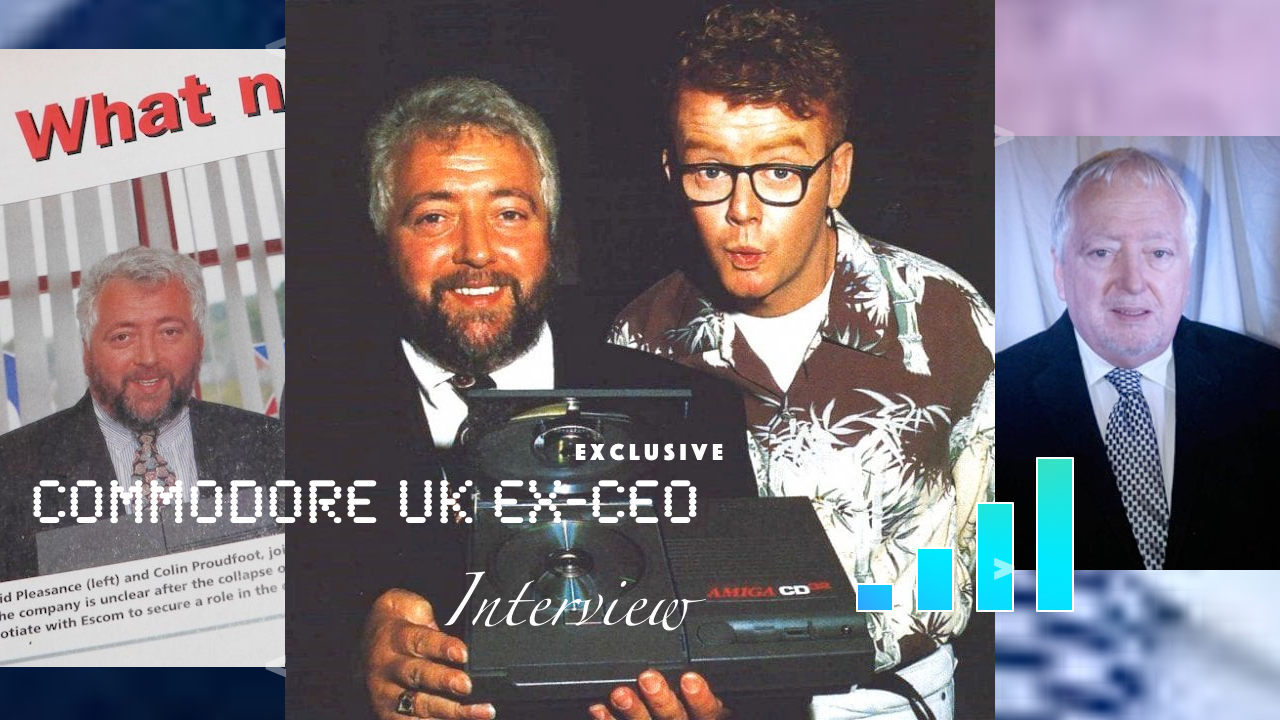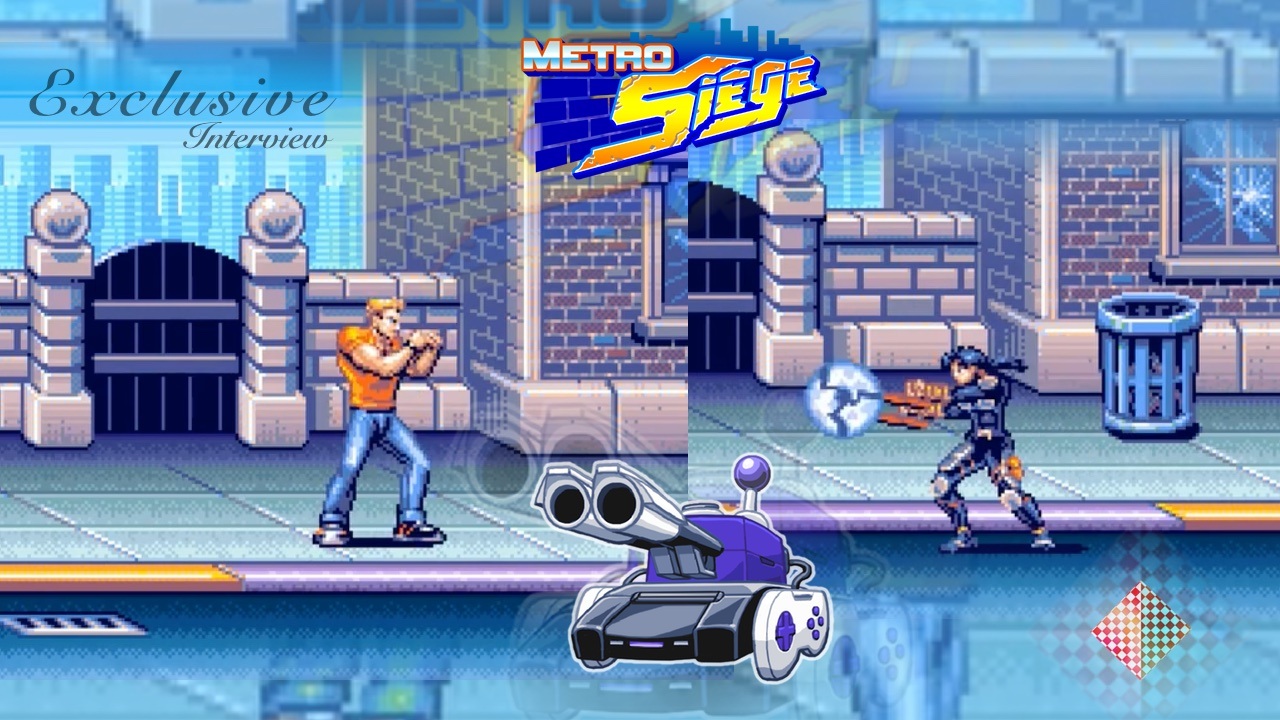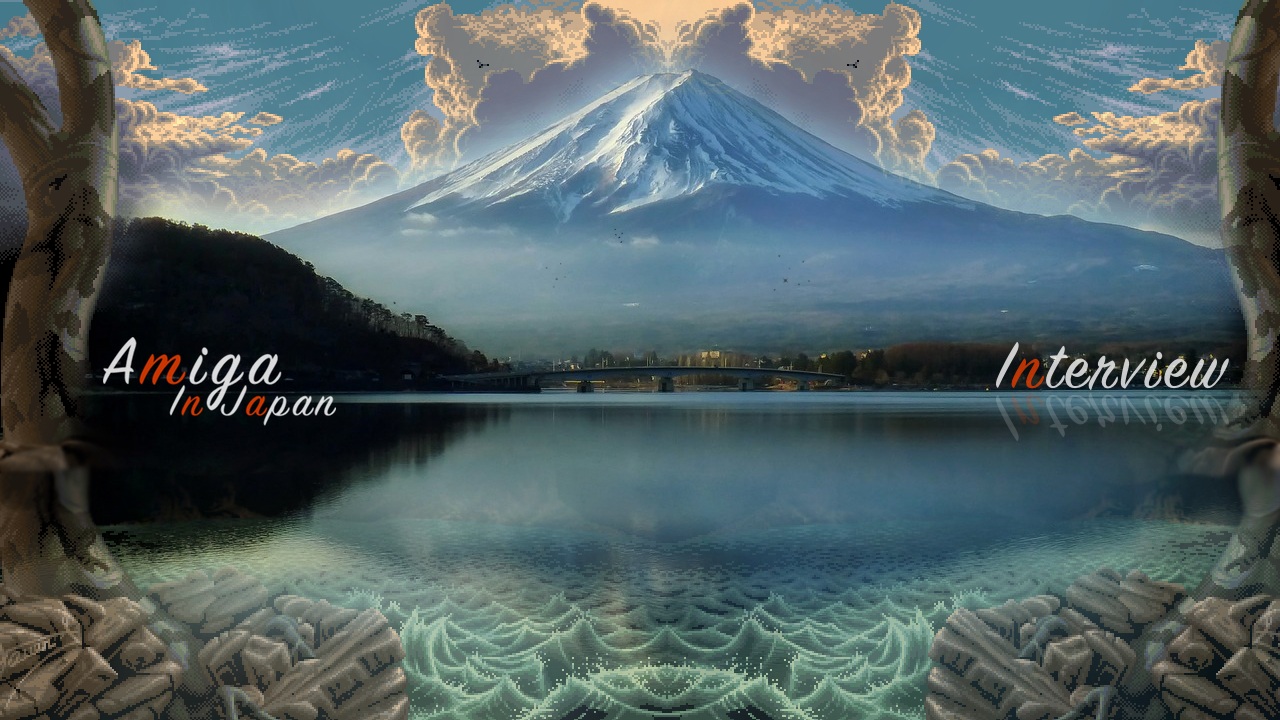
The Amiga history isn’t complete without a interview with one of the legends behind Commodore UK. David John Pleasance is known from the history to be one that tried to fight for keeping Commodore alive through Commodore UK. Now he is busy with the Friends project, but I wanted to ask him various of questions. Now his book is out but this interview was made before the release. Enjoy the interview.
1. How are you feeling David?
I am in a very good place at this point in my life.
Having been a professional musician as a younger man, I have until recently been working in the live music business, promoting mostly Acoustic based Singer Songwriters and putting on live performances including a once a month free entry event at The Key Theatre Peterborough giving Original songwriters the opportunity to perform to an audience that are there to listen. l have also been doing lots of Charity live music events, raising funds for Help for Heroes, British Heart Foundation, Sue Ryder Hospice and local (to me) Charity for Disabled children and kids with life threatening illnesses “Little Miracles” I also have 2 sons who have their own band Satya Dub Orchestra – here is a link to their brand new single – “Like Water” My eldest son Marcel is the songwriter, plays guitar and sings the lead vocals. My youngest son Emile is playing bass guitar.
2. What do you do for living now and how is your life going?
I have just returned back to the world of corporate IT, having been tempted by the guys from Norwegian Software developers Friend Software Labs with their amazing
product FreindUP https://friendos.com/
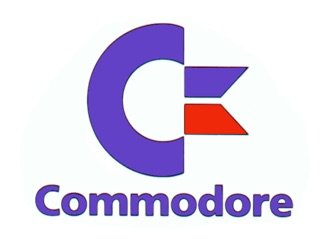
Here is an interview with Hogne the Founder and Chief Architect explaining what it is.
https://beta.openfriendup.net/webclient/index.html
The other exciting thing about this, is that my CBM UK Ltd. Co – Managing Director and very good friend, Colin Proudfoot is also joining this innovative software development company whose roots and spirit are based on the Amiga operating system (now brought into the 21st century.
Here is the Video press release of the announcement of Colin Proudfoot and I joining FriendUP
1. Can you describe a bit about Commodore and you. How did you got involved?
Actually my joining Commodore June 1983 was a complete stroke of luck.
I had been living in Australia for several years, here I had been in Sales and Marketing for several years, firstly in Non Tangibles, with BankCard (pre-cursor to Visa and Mastercard) where I was National Accounts Manager.
Then I decided to change career and move into tangibles and joined 3M Company where again I was responsible for all the major (National) accounts.
As a result of the marketing activity I conducted there (marketing blank cassette tape, with many of the hardware manufacturers, Toshiba, Hitachi, Sharp, Samsung etc. at which time I was approached by Pioneer Electronics and appointed Sales Manager.
In 1983 deciding I wanted to get an International role, I decided to return to UK, however
on the way to the UK, I spent several weeks traveling all over the world, looking at what was going to be the next “big thing” which I determined would be home computers.
I started to apply for any job which related to Computing, and there was one through an agency, which to be honest took me 40 minutes of hard selling on the telephone, just to get an interview.
I went to the interview and it went very well, however even though the recruitment agent said he believed I could easily do the job, he also said he would not put me forward for it. He explained that I had far too much experience in the Retail environment and that it would be very wrong of him to not direct me back into that field.
As I got up to leave, he explained to me that he had, just immediately prior to me arriving for my interview, been given a brief, by a very substantial Computer company, (Commodore) and he felt I was perfect for what they were looking for, which was for somebody to sell business computers (Pets) into the retail sector. I had 2 interviews and was recruited in June 1983.
However within a couple of months I was promoted to National Accounts Manager for the Consumer products division.
2. What did you do at Commodore?
- June 1983 – September 1983 – Salesman – Business products into Retail
- September 1983 – National Accounts Manager – Consumer Division
- January 1988 – Sales and Marketing Director
- January 1990 – General Manager CEL (The group Holding Company) based in Basle Switzerland – responsible for all (37 Countries) where we did not have subsidiary offices.
- January 1992 – Vice President Consumer products Commodore Inc. (the USA sales company) based in Westchester PA USA
- December 1992 – Managing Director CBM UK Ltd. (shared responsibility with Colin Proudfoot – Finance)
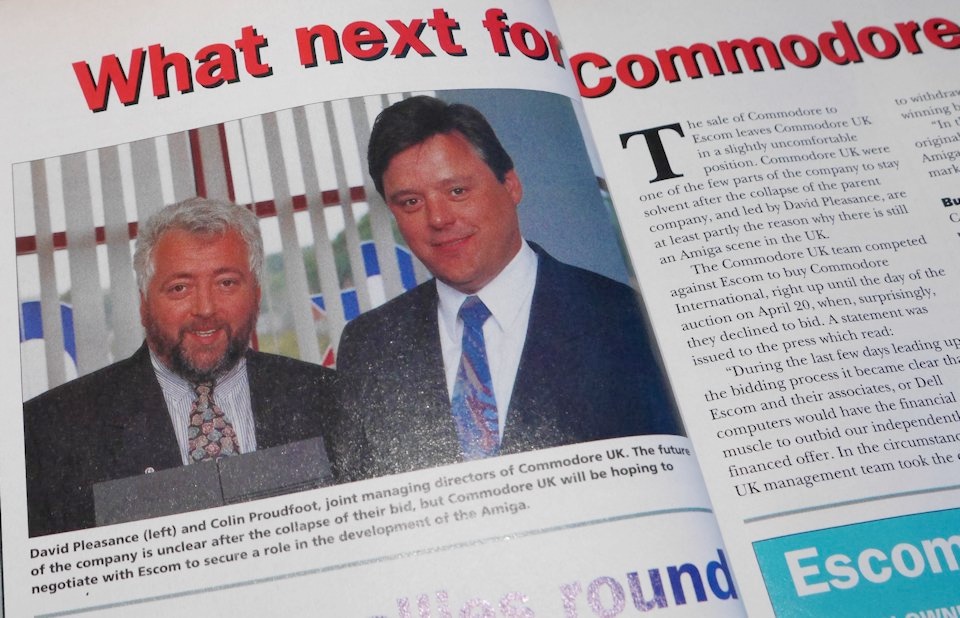
3. What happened with you at Commodore in 1994? Can you tell us a bit about Commodore UK and its relationship with Commodore? Many have more questions than answers from that time.
I was highly regarded by Mehdi Ali (not that I hold many stores in that by the way) he promoted me to General Manager of CIL, Vice President of Commodore Inc., and then MD of CBM UK Ltd.
He also once took me to his house, where I stayed overnight and had dinner with him and his family.
Having said that, I have been highly critical of Mehdi Ali (President) and Irving Gould (Chairman and major shareholder) In the 12 years I worked for them they NEVER had a plan they simply stumbled from one crisis to the next and we found ourselves constantly putting out fires instead of directing all our energy into building a business.
CBM UK Ltd, was by far the strongest of all the subsidiary companies, so when our parent declared Bankruptcy, and as each of the other subsidiaries went bust, we bought all their stock, and kept trading.
We lasted almost 18 months, until there was no more products left to buy.
During the final months of CBM UK Ltd. being in business, Colin and I genuinely believed we were the best people to run Commodore world wide, so we decided to produce a business plan, to determine if we could run a viable and profitable business.
We could.
So we approached Coopers & Lybrand Accountants who had a superb history of raising investment and successfully managing similar Management Buy out transactions.
We had determined we would need US $50 million, not only to purchase the worldwide assets (estimated we would have to pay US 15 million from the liquidator) but more importantly a further US $ 35 million to fund the running of the business and pay upfront for the components, as no supplier would give us trading terms having been “burnt” with bad debts from CIL.
Through Coopers & Lybrand we raised US$ 25 Million from mostly high wealth individuals, plus we were also approached by a Chinese Manufacturing company New Star Electronics (who up to that point in time had been illegally manufacturing Sega and Nintendo products)
They had been told by the Chinese Government that they must become legitimate and so had committed to us the second US$ 25 million
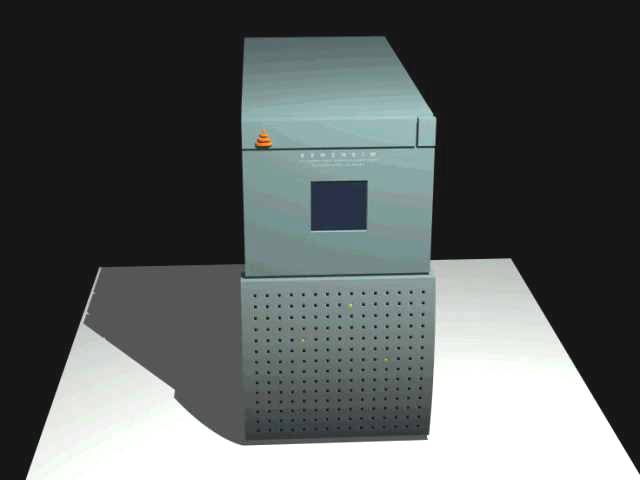
4) How did Escom get the rights? It seemed for a long time that you were going to bring the Amiga back. In a word, they “cheated” us out of buying Commodore.
36 Hours before the Auction of the Commodore worldwide assets, New Star Electronics without warning pulled out of the deal.
This meant that even though we could have bought those assets,(sold for less than the US $15 million we had estimated) knowing we did not have sufficient funds to maintain the business until we reached profitability, meant it would almost be certain we would lose the US 25 million provided by the investors, so we had no option but to withdraw.
Apparently Escom had told New Star Electronics, that if they pulled out from our consortium, they would let them have manufacturing for free.
Shortly after Escom won the auction, they dumped New Star Electronics. What a surprise!
I can assure you we had our suspicions about Escom and in particular which person was responsible for this, and our suspicions were recently confirmed by the individual themselves admitting it to Colin.
5) What sort of plans did you have for Amiga? Another CD32 console, or?
Our business plan was in 4 parts.
5B1)
EXISTING TECHNOLOGY:
We planned to utilize existing technology and provide an upgrade path to allow Amiga owners to start with the lowest cost entry point model, then upgrade as they could afford to.
We had designed a tower case that could mount A500 PCB and also an A1200, A2000 A3000 and A4000, and was the heart of our concept that would see all revisions of the current Amiga technology would be designed to fit this tower case. All peripherals would also be compatible. This range we were going to call “Amiga Infinity”.
5B2)
The engineering team were working on a brand new chip set (Codenamed Hombre) which used a Risc based core, and which also featured inbuilt 3D rendering, 5.1 surround sound stereo chunky planar and much much more. Sadly this was not compatible with the then current Amiga technology however was so far advanced of anything else in the market, we wanted to support the development of this technology.
5B3)
In order to generate sufficient income to support 1) and 2) we intended to License out our well know brand names.
CBM – Commodore Business Machines- we would allow Manufacturers of PC’s and Business related products to use our CBM logo – for which we would receive a License fee. We would also offer whoever did manufacture those CBM badged products, that our sales teams could also sell their products for them into our existing substantial network of dealers and Retail stores, for a commission fee.
We would then place orders, have the products delivered to our customers, not having to finance either components or finished goods inventory.
COMMODORE – This brand name was (then) one of the most high profile names in the whole of Europe, and could be found in every retail outlet.
We would License this brand name for use by manufacturers of virtually anything with a mains plug on it. This could be for example Toasters Kettles Microwaves TV’s CD players etc. etc.
AMIGA – This was clearly our most popular (trendy) brand name and we would License it for the manufacture of things such as T-Shirts – Track Suits – Hoodies etc. any type of clothing.
In support of all this Licensing activity we would establish a small Quality Control division to ensure the protection of our reputation.
5B4)
CD32 – We would license CD32 to ALL/ANY manufacturer of Hi-Fi products for them to incorporate into their stacking systems (instead of just CD players or DVD players) which not only would have the effect of lowering the manufacturing costs through increased volumes but would also have the desirable effect of getting computers into the living room.
6. What did you do after the failure of getting Amiga rights?
I firstly invested in setting up a Recording Studio business, Tangent Music Design from which my “Everybody’s Girlfriend” CD “A celebration in music of 10 years of the Amiga” was produced.
Later I remarried and took my new wife and her daughter to Australia where (as a means of obtaining Australian Permanent Residency and Australian Passport) I bought a business, a Mexican Restaurant, which I owned and ran for 5 years.
I also established a new business assisting Australia’s newly arrived business migrants to settle into their new Country.
Returning to the UK during the big economic crash, I set up a small business importing jewellery from around the globe, recruiting agents, and selling it through Jewellery Parties the agents ran from home or from friends houses.
Subsequently got back in to the live music business (see above)
7. What do you think of Escom and Gateway 2000 era in Amiga history?
A complete shambles. They NEVER really wanted anything to do with Amiga, merely to use the Commodore name for the PC’s they were manufacturing.
8. What do you think of the nextgen AmigaOS operating systems like AmigaOS 4 and MorphOS? Do you think that they have a future? And if so, what sort of directions should they all go? Do you see any hope for them?
To be honest I am not well placed to have much of a valid opinion, as I left the industry, went overseas and as a result I do not know sufficient details plus, I have openly stated I am not a technically minded person.
9. Is there anything extra that you want to reveal for us here at Amitopia? Our goal is to become an independent news site where we have contributors from all corners of the world. Is there any reason why Amiga never got released everywhere in the world? In Japan, we know of X68000 machines that became quite big. Did Commodore have any plans in that region at all?
I have no knowledge of any business dealings in Japan. The only information I can find about X68000 relates to a product released by Sharp
As I mentioned earlier Commodore’s top management never had a plan, and even though I was responsible for non subsidiary countries I was never asked to develop Japan. In fact I was completely stunned that we opened a factory in the Philippines (5 – 6 weeks delivery by sea to our main market – Europe) when we had zero business in the Far East.
10. Distrita would thank you so much for answering my interesting but maybe a bit weird questions. I like to ask in a way that everyone can understand, so I hope you enjoyed answering my questions.
I hope you are happy with these responses.
Cheers
David
Thanks to David that wanted to answer my questions. He is an important piece of the history of Amiga. What do you think would happen if ESCOM didn’t get the rights and Commodore UK won?

